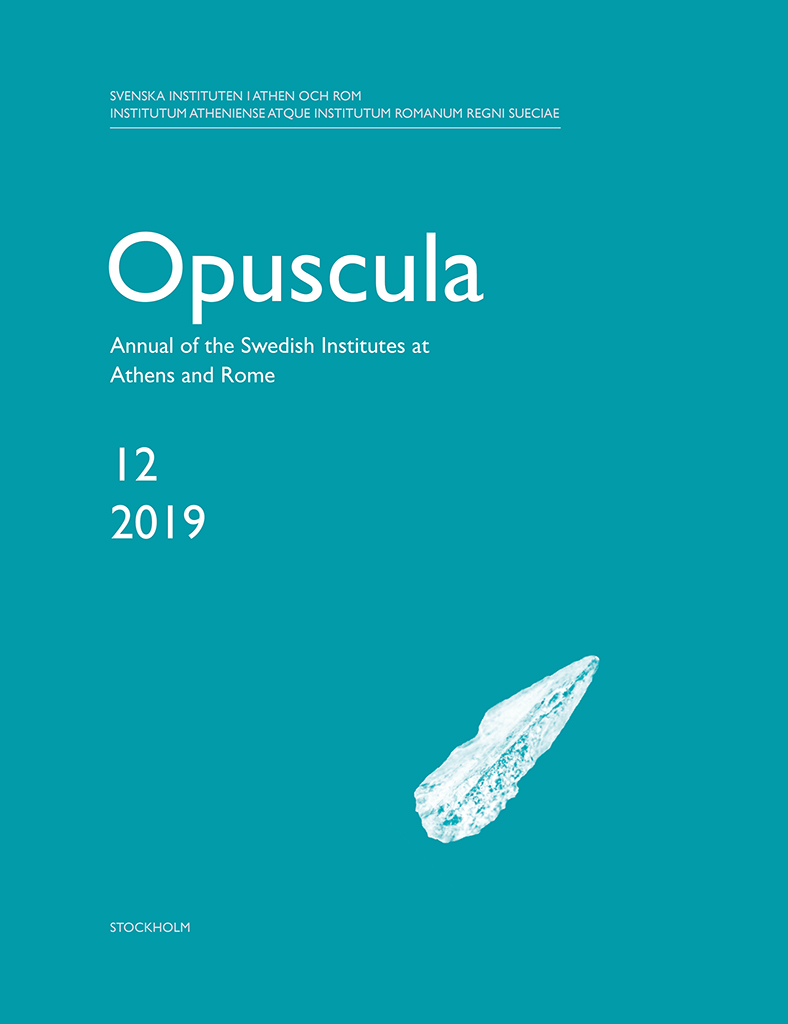All content of Opuscula 12 (2019) is available with open access. Printed edition distributed by Eddy.se AB. Also available at Amazon.com, Adlibris, and Bokus. View volume at ERIH PLUS. Physical environment and daily life in the Sanctuary of Poseidon at Kalaureia, Poros. The bioarchaeological remains By Arto Penttinen (Swedish Institute at Athens, Greece) & Dimitra Mylona (INSTAP Study Center for East Crete, Greece) Abstract The section below contains reports on bioarchaeological remains recovered in the excavations in Areas D and C in the Sanctuary of Poseidon at Kalaureia, Poros, between 2003 and 2005. The excavations were directed by the late Berit Wells within a research project named Physical Environment and Daily Life in the Sanctuary of Poseidon at Kalaureia (Poros). The main objective of the project was to study what changed and what remained constant over time in the everyday life and in both the built and physical environment in an important sanctuary of the ancient Greeks. The bioarchaeological remains, of a crucial importance for this type of study, were collected both by means of traditional archaeological excavation and by processing extensively collected soil samples. This text aims to providing the theoretical and archaeological background for the analyses that follow….
Distributed by Astrom Editions. View record at WorldCat. Pyrgouthi. A rural site in the Berbati Valley from the Early Iron Age to Late Antiquity. Excavations by the Swedish Institute at Athens 1995 and 1997 By Jenni Hjohlman, Arto Penttinen & Berit Wells, with contributions by Yannis Bassiakos, Katie Theodorakopoulou, Hero Granger-Taylor, Sven Isaksson, Petros Lymberakis, Dimitra Mylona, Maria Ntinou, Anaya Sarpaki & George Syrides This volume presents the results of the excavations in 1995 and 1997 at Pyrgouthi in the Berbati Valley, Argolis, Greece. The toponym is the local denomination for a Hellenistic tower, which has always been a prominent in the landscape. In the surface survey of the valley in 1988–1990 the tower was perceived as part of a Classical farmstead and in the ensuing excavation project it was targeted as such. However, the excavations revealed that this interpretation corresponded to but a fraction of the truth. The tower had been built on a knoll in the center of the valley but the earliest human activities at the site can be dated to the end of the Early Iron Age or the eight century BC. At this point in time, Arto Penttinen argues, the archaeological record can be reconciled…


